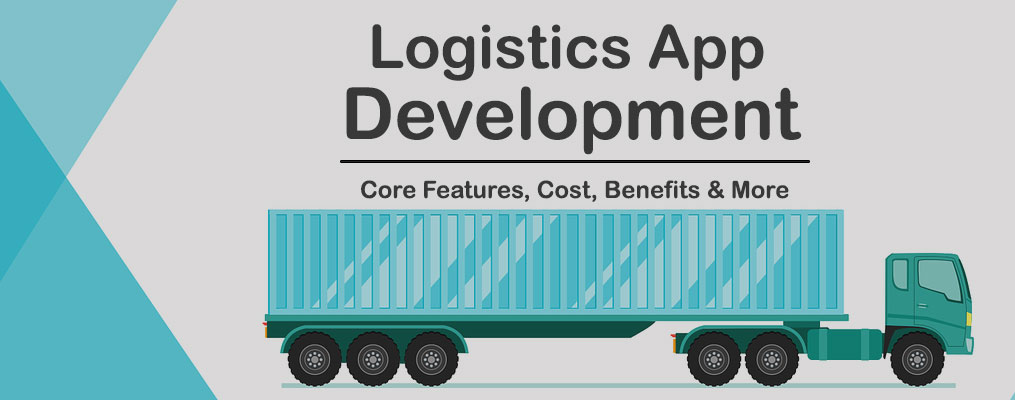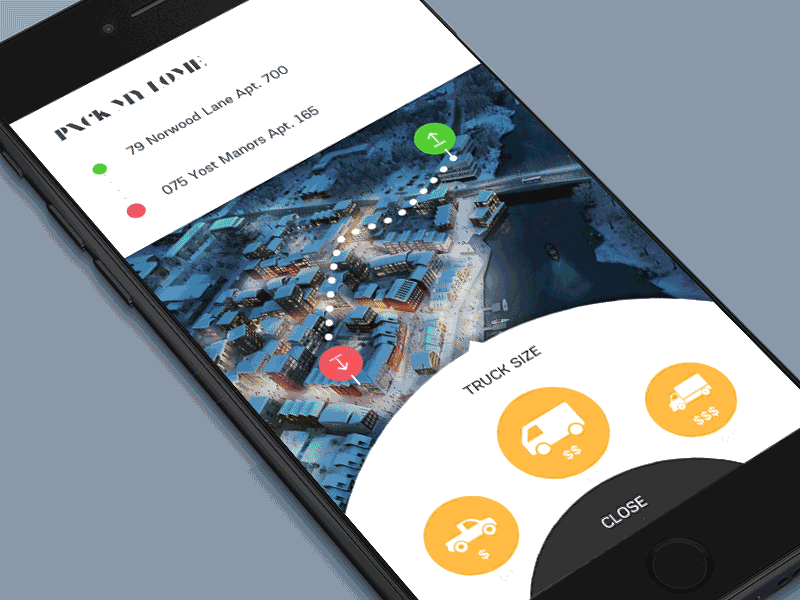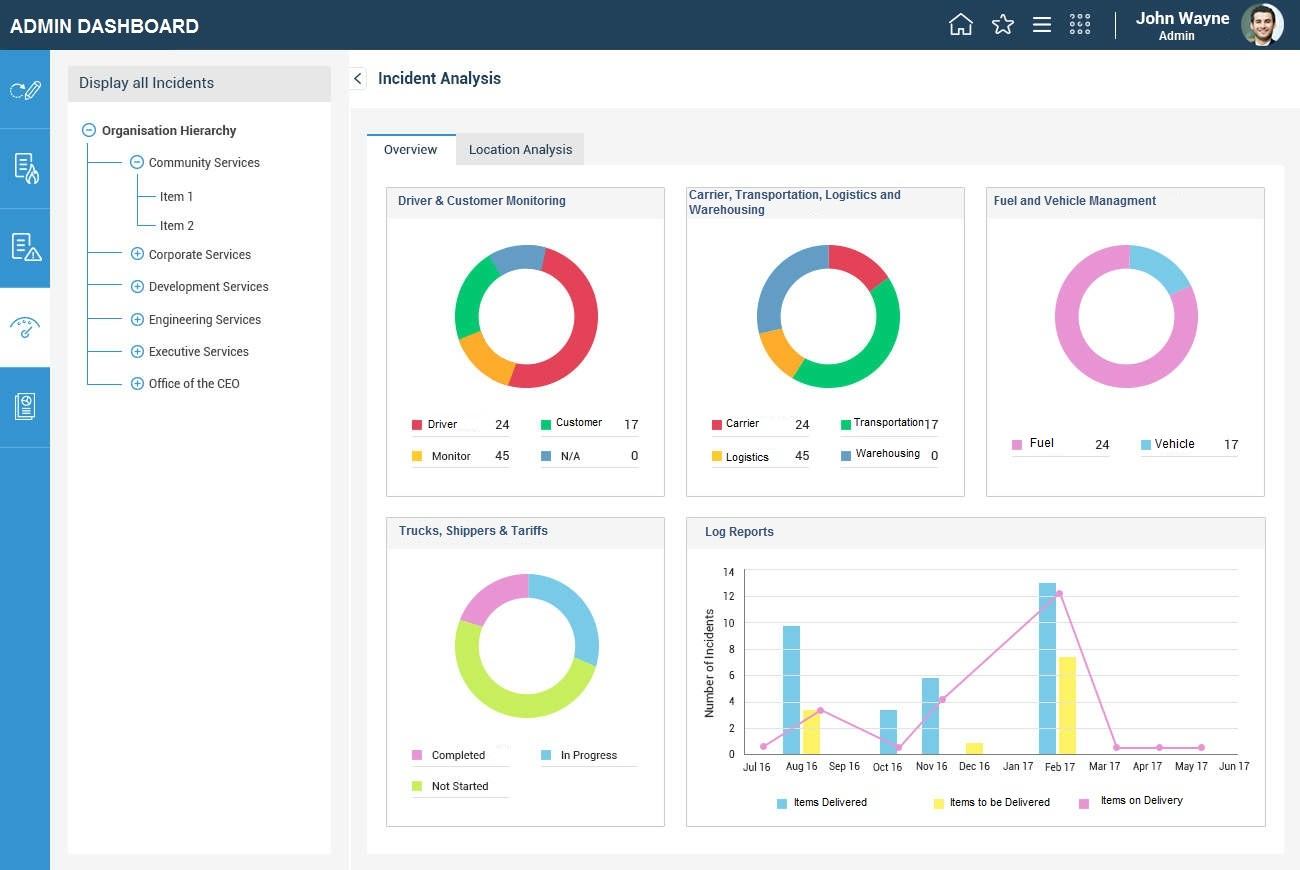On-Demand Logistics App Development: Core Features, Cost, Benefits & More

Mobile App Development
If we look back over the past few years, we find that there has been tremendous growth in the number of businesses adopting the on-demand economy – a completely new business model utilized by digital marketplaces and technology companies to fulfill consumers’ demand via the immediate provisioning of goods and services.
The State of the On-demand Economy
According to a report from Harvard Business Review, the on-demand economy attracts over 22.4 million consumers every year with spending of around $57.6 billion.

Going by these statistics, the on-demand market is expected to hit $533.5 Billion by the year 2025, with 42% or 86.5 million users in the USA alone use an on-demand service at some point. The top factors driving the popularity of on-demand economy, according to Statista, are:

The concept, initially started from the simple idea of cab-booking, has now expanded its reach to a wide spectrum of industries, including Home Services, Food/Grocery Delivery, Travel, Logistics and Transportation – example of which is the following graphic that demonstrates the investment in on-demand economy is rapidly growing by a year-over-year growth rate of 50%.

As you can see, the Transportation industry explicitly dominates the on-demand economy, which is sometimes also referred to as ‘access economy’. In fact, more than 75% of funding goes to just 5 on-demand startups, of which four belongs to the Transportation industry.

And if we look at some more statistics, another survey conducted by the SelectUSA reveals that the logistics and transportation industry contributes to around 8% of the US GDP and continues to grow with a CAGR of approx. 11%.

Since the value of the logistics industry is expected to be worth $15.5 trillion by 2023, the future of on-demand logistics app development looks quite promising.
Thanks to the gigantic success of on-demand logistics startups like Uber Freight, and Convoy – everyone today is looking to have an on-demand logistics app like these to harness the growth opportunities generated by the on-demand economy.
However, when it comes to on-demand logistics app development, the very first thing that comes to anyone’s mind is arguably the cost and features associated with the app. Through this article, we’ll explore the same but let’s have a glimpse of the types of logistics and transportation app solutions that you can develop for your logistic business.
Types of Logistics and Transportation Apps
Type of the app is the first and foremost factor that decide the cost of logistics mobile app development. Ideally, there are four main types of logistics and transportation apps:

Fleet Management Apps:
It does what it says. A fleet management app helps you manage the entire fleet. With such apps, you can monitor and record all the data related to your fleet and vehicle in real-time. All you need to assign the app to the driver and manage all your fleets with an end-to-end mobile solution. A great example of such apps is Wialon.
On-demand Logistics Apps:
These apps are specifically designed to take full advantage of the booming on-demand economy. With on-demand logistics apps, you can deliver products or services to your customers as and when they need them.
This is actually what our blog post is about and this is where most of the eCommerce ventures prefer to tie up with a logistics partner to provide their customers with ultra-fast, on-demand deliveries. Some great examples of on-demand logistics apps include:
Real-Time Forwarding & Tracking Apps:
Designed for both the users and business owners, these type of apps allow you to get real-time updates about the goods deliveries, locations and routes taken by your drivers – just like you track a Uber car. Track is a perfect example of real-time forwarding and tracking apps.
Warehouse Management Apps:
The warehouse is a vital part of any logistics business and a warehouse management app does exactly what it advertises. Using these apps, one can easily store, access and manage a huge amount of warehouse data in a much more simplified and efficient manner. Designed to help you manage all the data related to the warehouse, these apps are useful to only businesses. A great example of such apps is Veeqo.
All-In-One Logistics and Transportation Apps:
This one is really interesting. An all-in-one logistics and transportation app is the one that consists of all the features of the above-mentioned logistics app types and is equally useful for users, drivers, and business owners.
Business Benefits of On-demand Logistics App Development
So, in the simplest terms, an on-demand logistics app is an application program that contains all the essential transport features to help users schedule and track a courier or freight service in real-time using their mobile phone.

Depending on their type and the features included, an on-demand logistics app offers several unique benefits to business owners, such as:
- Ability to track vehicle
- No room for errors
- Near zero paperwork
- Facilitate online booking
- Real-time updates
- Post-delivery confirmation
- Enhances operational efficiency
- Better warehouse, inventory and fleet management
- Flexibility to optimize routes and delivery schedules
- Ensures efficient logistics services at a low cost
Core Features of an On-Demand Logistics App
Any transportation business involves at least three types of people:
- A person who wants to transport something (end-user/customer)
- A person who drives a vehicle to transport that thing (driver)
- A person who owns the vehicle/fleet/business of transport (admin)
And, the same applies to logistics and transportation app development. Generally, a logistics app has three modules and the features of the app can be grouped based on this classification:
- Customer Panel
- Driver Panel
- Admin Panel
Let’s check out the features of each module:
Customer Panel:

- One-click Signup/Login: This is the first section where the consumer will land on and can either register or can sign-in with their e-mail id, mobile number, or social media credentials. The same section also facilitates various password recovery options.

- Vehicles Selection: After the registration, the user should be able to select an appropriate vehicle for the transportation of goods from the list of all available vehicles.

- Schedule and Manage Bookings: This is the area where customer can book and schedule the selected vehicle for their desired date and time. This feature also allows users to manage their all bookings from a single place and contact the Driver if required.

- Billing and Payments: With the help of this feature, customers can check and keep track of their invoices as well as they can pay the amount online using different in-built payment methods.

- Real-time Shipment Tracking: This feature helps customers track and monitor their shipments/drivers in real-time. They can see the route taken and even raise a query if they face any problem.

- Real-time Alerts and Notifications: The user gets the real-time push notifications and alerts related to deliveries, tracking, offers, and other similar things. However, the main purpose of this feature is to keep users updated with the status of their orders.
- Review & Rating System: A must-have feature of every on-demand logistics app, using which customers can rate drivers based on their punctuality, behavior, and service quality.

- Estimate Fare Charges: The app has an in-built fare calculator that gives users an idea of estimated fare based on the size and weight of their shipment before the booking.

- Get a Quote: Using this option, the user can ask for a quote from the service provider to get a rough estimate of the time and cost involved.
Driver Panel:

- One-click Signup/Login: The driver can register and can even log in to the app using their e-mail id, mobile number, or social media credentials.
- Request Management: This particular section helps the driver to manage all his pending and completed requests. The driver can also either accept or reject a request based on his availability.

- Make Available/Busy: Using this feature, the driver can change the status of his availability using plenty of options like Busy, Available, Offline, etc.
- Consignment Details: In this section, the driver can find all the details related to Shipper or Freight, like name, address, contact information, fuel charges, toll charges, goods weights, distance covered, and so on.
- Real-time Route & Navigation: With the help of this feature, the driver can pick the fastest route to reach the destination on time using GPS technology.
- Real-time Alerts and Notifications: The driver receives the real-time push notifications and alerts regarding new requests, cancellations, updates in an existing order, payments, and other similar things.
- Earnings Details: Using this feature, drivers can keep track of their daily, weekly, or monthly earning details.
- Bill Approvals & Payments: This is the area where the driver keeps a record of the payments made by the user and submit all the bills related to the toll, fuel, refreshments, etc for a particular journey so as to get them approved by Admin.
- Review & Rating System: With this feature, drivers can rate customers accordingly.
Admin Panel:

- Login: The admin can log into his account using their email id and password or social media credentials. Also, they can create an entirely new account to maintain system integrity.
- Dashboard: The dashboard displays all the critical information related to the users and drivers at a glance and the Admin can customize it based on their preferences.
- Fleet/Vehicle Management: In this section, the Admin can find and manage all the information related to vehicles, trucks, shipment orders, tariffs, fuel consumption, etc.
- Role Management: With this feature, Admin can define and manage different user roles according to their business needs and deeds.
- Monitor Drivers: This particular feature allows the Admin to track and monitor drivers involved in the shipping and their on-road activities.
- Billing and Invoice: Through this section, the Admin can access, analyze, and approve all the bills and invoices submitted by drivers and users.
Some Advanced Features You Can Add to Your On-demand Logistics App
- In-app Chat & Notifications: In a transportation business, communication between all the parties involved is crucial. Hence, incorporating an in-app chatbot to your on-demand logistics app, you can enable all the parties to chat without leaving the app.
- Multi-language Support: Given that the app may be used by drivers across different regions and countries, you can consider making it multilingual.
- Real-time Analytics: Using this handy feature, Admin can easily measure all the business-related activities and generate real-time reports regarding the number of orders completed, fuel consumption charts, and the like precisely.

- Driver Safety & Other Driver-related Features: To ensure the safety of on-duty drivers, you can integrate this feature to your app which tracks several things like the vehicle speed, driver’s halts, and phone usage, and frequency of hand-brake usage, etc. Furthermore, you can generate a scorecard according to the driver behavior to ensure maximized safety.
- QR Code: You can add QR code functionality to your app to secure customers deliveries and make the payment process smoother.
- Trip Log Reports: This feature allows the Admin to record and evaluate all the details related to a trip, like start and end time, distance covered, and so on.
- Multiple Payment Gateway Integration: In addition to integrating basic payment gateways, like Stripe, Uber’s Braintree, and the very popular PayPal, you can offer some more payment options to your users, such as Credit Card, Debit Card, Internet Banking, Cash on Delivery, etc.
- Cloud Storage: For more secure storage of transportation and logistics data, you can leverage the power of Cloud Technology.
- Referral Rewards: You can add this feature to invoke more users to download and install the app.
- Offline Support:To enable users to access the app and enter the crucial data even when there is no internet connection available. In fact, offline capabilities are one of the secrets behind insanely successful mobile apps.
Technology Stack for On-Demand Logistics App Development
To build a well-functional on-demand logistics app, you need to pick the right technology stack based on the latest and evolving technologies. Mentioned below are the best technologies and tools you can use for your on-demand logistics app development.
- Push Notifications: Twilio, Push.io, APNS (iOS), or Firebase (Android )
- Login Authentication: Nexmo or Twilio
- Database: MySQL, MS SQL, MongoDB, Cassandra, PostgreSQL, or Hbase
- Real-time Analytics: Hadoop, Spark, BigData, Apache Flink, Cisco, IBM, or Firebase
- Payment Gateways: Braintree, PayPal, Stripe, or any popular payment gateway of your region
- Programming Languages & Frameworks: Swift, Kotlin, Objective-C, React.js, Node.js, Angular.js, or Ionic
- API Languages: PHP, .Net, Node.js, Python, Ruby on Rails, or Java
- Cloud Environment: AWS, Google Cloud, or Microsoft Azure
On-Demand Logistics App Development Process
Just like any other app, the development of an on-demand logistics app also includes several phases of design, development, and testing. Following is the process of on-demand logistics app development:

Team Structure for On-Demand Logistics App Development
To develop an outstanding on-demand logistics app, you will require an entire team of mobile app development professionals. The main team players of on-demand logistics mobile app development are:
- Project Manager: A dedicated project manager having adequate knowledge and experience in both the mobile app and logistics industries. He/she must be able to formulate the best possible solutions and capable of leading the entire development team.
- Designers: They are the original brain behind showcasing the core idea of your app. Therefore, make sure to hire expert UX/UI designers who excel at creating extraordinary app designs. Poor User Experience & Design is indeed is indeed one of the main reasons why many mobile apps fail.
- Developers: Developers are the real brain behind your on-demand logistics app. Make sure the developers you’re going to hire have hands-on experience on the latest mobile app development technologies and tools as well as specialize in both Android App Development and iOS App Development.
- Quality Testers: They test the developed app using various mobile app testing tools via both manual and automation testing to make sure it meets all the standards and is completely bug-free.
So, How Much Does it Cost to Develop an On-Demand Logistics App?

When it comes to developing a mobile app, many factors affect the cost of mobile app development. However, the cost of developing an on-demand logistics app is determined by the following key factors:
- Choice of the Platform: Android, iOS, or Both
- Feature Integration: As a general rule, the more features your app has, the more complex it becomes and the higher the development cost goes.
- Development Duration: The more features your app has, the more time it takes to develop and consequently, the more money you are required to pay.
- Hourly Rate: Different countries or regions across the world has different hourly rates for mobile app development, which also affects the overall cost of on-demand logistics app development. The hourly rates of app developers in various regions range from $20 to $500.
So, as a rough estimation, the overall cost of an on-demand logistics app with basic features usually starts from $10,000 for the single platform (whether Android or iOS) and can exceed up to $40000 depending on the features that are to be integrated. For the exact budget estimate, you can get in touch with iPraxa – a leading on-demand logistics app development company.


